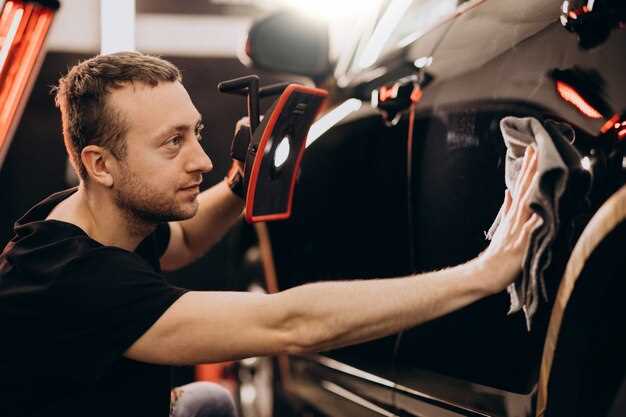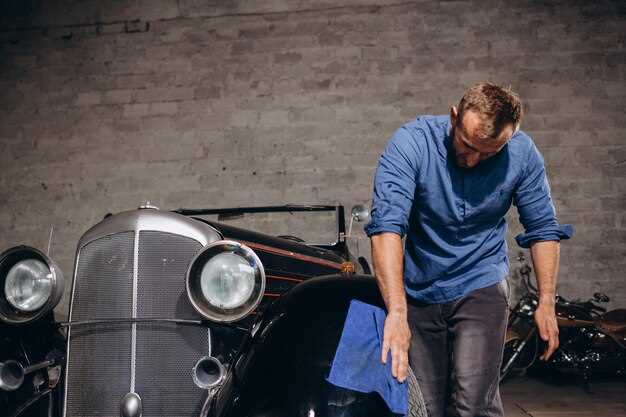
Owning a muscle car is a thrilling experience, but to keep your vehicle looking its best, it requires dedicated care and attention. Detailing a muscle car is not just about enhancing its aesthetic appeal; it also protects the paint, preserves the interior, and ultimately maintains the car’s value over time. Whether you’re a seasoned car enthusiast or a novice, mastering the art of detailing can elevate your vehicle’s appearance and prolong its lifespan.
In this guide, we’ll explore expert tips that will help you approach the detailing process like a professional. From the right cleaning products to proper techniques for polishing and waxing, you’ll learn how to give your car the meticulous attention it deserves. With our straightforward advice, you can transform your muscle car into a gleaming representation of automotive excellence.
Additionally, we’ll cover essential aspects of interior detailing, ensuring that every inch of your car is maintained to the highest standards. By following these expert recommendations, you will not only enhance the look of your muscle car but also enjoy the satisfaction that comes with achieving a showroom-quality finish.
Choosing the Right Products for Your Muscle Car
Selecting the right products for detailing your muscle car is crucial for maintaining its appearance and value. It is essential to focus on quality over quantity. Opt for car care products that are specifically designed for muscle cars, as they often have unique finishes and materials that benefit from specialized formulations.
Start with a high-quality car wash solution that is pH-balanced and free of harsh chemicals. This will effectively remove dirt and grime without stripping away protective wax or sealants. Follow up with a clay bar treatment to eliminate embedded contaminants, ensuring a smooth surface for polishing.
When it comes to polishing, choose a product that matches your paint type. For classic muscle cars with single-stage paint, a gentle finishing polish can enhance depth and gloss. For newer clear-coated finishes, an all-in-one polish or a dual-action polish can effectively restore shine while providing protection.
Waxing should not be overlooked in your car care routine. Select a high-quality carnauba or synthetic wax suitable for your vehicle’s specific needs. Carnauba wax offers a warm, deep shine, while synthetic options provide longer-lasting protection against the elements.
Don’t forget to invest in microfiber towels and applicators. These tools are less abrasive and reduce the risk of scratching your muscle car’s surface. Additionally, use dedicated tire and trim products to enhance the overall appearance, ensuring every aspect of your car is meticulously cared for.
Ultimately, the right array of products tailored to your muscle car will not only protect its finish but also enhance its legendary appearance. Focus on quality, compatibility, and the specific needs of your vehicle to achieve professional-level results.
Step-by-Step Guide to Exterior Washing

Proper exterior washing is essential for maintaining the appearance and value of your muscle car. Follow these detailed steps to ensure your vehicle receives the care it deserves.
1. Gather Supplies: Start by collecting all necessary products. You will need a high-quality car wash soap, a large bucket, microfiber wash mitts, a hose with a spray nozzle, and a wheel cleaner. It’s advisable to use products specifically designed for cars to avoid damage.
2. Choose the Right Location: Find a shaded area to work. Direct sunlight can cause soap to dry too quickly, leading to streaks and spots on the paint.
3. Pre-Rinse: Begin by rinsing your muscle car with water to remove loose dirt and debris. Use a hose with a spray nozzle to create a gentle flow, ensuring that you remove as much grime as possible before applying soap.
4. Prepare the Wash Solution: Fill a bucket with water and add the recommended amount of car wash soap. Follow the instructions on the product to achieve the right mixture for effective cleaning.
5. Washing the Car: Dip a microfiber wash mitt into the soapy water and start washing from the top down. Work in sections and use straight, gentle motions to avoid scratching the finish. Rinse the mitt frequently in the bucket to prevent dirt from being reintroduced to the paint.
6. Cleaning the Wheels: Wheels can collect a lot of dirt and brake dust, so they require special attention. Use a dedicated wheel cleaner and a separate mitt or brush to scrub the wheels, rinsing thoroughly to remove all cleaner and grime.
7. Rinse Thoroughly: After washing the entire car, rinse each section thoroughly with clean water. Make sure no soap residue is left behind, as it can cause a dull finish.
8. Drying Technique: Use a clean, dry microfiber towel to gently blot the surface of the car. Avoid dragging the towel across the paint, as this can lead to scratches. Alternatively, you can use a blower to remove excess water from crevices.
9. Final Touches: Inspect your car for any missed spots or stubborn stains. Touch up these areas as necessary, ensuring a thorough cleaning. Consider applying a wax or sealant after washing to protect the paint and enhance shine.
10. Regular Maintenance: Establish a regular washing schedule to keep your muscle car looking great. Consistent care will help prevent buildup and maintain the vehicle’s value over time.
Techniques for Polishing and Waxing
Polishing and waxing are essential steps in the detailing process that enhance the appearance of your muscle car while providing protection against environmental factors. To achieve professional results, follow these techniques:
1. Preparation
- Start by washing the car thoroughly to remove dirt and contaminants.
- Use a clay bar to eliminate embedded contaminants that washing may not remove.
- Ensure the surface is completely dry before polishing or waxing.
2. Choosing the Right Products

- Select a high-quality polish suitable for your car’s paint type.
- Consider using a finishing polish for minor imperfections and a cutting polish for deeper scratches.
- Opt for a wax that provides UV protection and water repellency.
3. Polishing Techniques
- Apply a small amount of polish to a polishing pad or foam applicator.
- Using a dual-action polisher, work in sections, starting with a low speed to spread the product evenly.
- Increase the speed gradually and move the polisher in overlapping passes to prevent swirl marks.
- Buff off the polish using a microfiber towel, ensuring no residue remains.
4. Waxing Techniques
- Use a clean applicator pad to apply a thin, even layer of wax onto the surface.
- Work in small sections, allowing the wax to haze over for a few minutes.
- Buff the surface with a soft microfiber towel, using circular motions to achieve a brilliant shine.
- Check for any missed spots and apply additional wax as necessary.
Consistent care and detailing will keep your muscle car looking brand new. Following these techniques will enhance its beauty and ensure long-lasting protection.
Interior Detailing: Cleaning and Protecting Surfaces
To achieve a professional-level interior detailing of your muscle car, it is essential to focus on both cleaning and protecting all surfaces. Start by removing all personal items and debris from the interior. This includes floor mats, trash, and any belongings that might have been left behind.
Next, vacuum the seats, carpets, and all nooks and crannies to eliminate dust and dirt. Use a quality vacuum attachment to reach tight spaces between seats and in deep crevices. Pay special attention to the areas where grime tends to build up, such as under the seats and around the center console.
For cleaning plastic and vinyl surfaces, select a high-quality interior cleaner that is safe for these materials. Apply the cleaner to a microfiber cloth and wipe down all surfaces, including the dashboard, door panels, and any plastic trim. This not only removes dirt but also helps in restoring the original sheen of the surfaces.
Cleaning your car’s upholstery is another critical aspect. Fabric seats can be treated with an upholstery cleaner or steam cleaning, depending on the level of dirt. This will help break down stains and odors, giving the interior a fresh feel. For leather seats, use a leather cleaner followed by a leather conditioner to keep the material supple and protected against cracking.
Don’t forget about your car’s windows and mirrors. Use a glass cleaner and a separate microfiber cloth to avoid streaks. This will ensure visibility and enhance the overall appearance of your muscle car.
After cleaning, it is crucial to protect all surfaces. For plastic and vinyl, consider applying a UV protectant that prevents fading and cracking over time. For leather surfaces, regular conditioning is essential. A good leather conditioner not only nourishes the material but also forms a barrier against spills and stains.
Finally, replace the floor mats and any personal items, making sure everything is in its right place. This thorough approach to interior detailing will not only enhance the aesthetic appeal of your muscle car but also contribute to its longevity and comfort.
Tips for Engine Bay Cleaning and Detailing
Keeping your muscle car’s engine bay clean is essential for both aesthetics and performance. A tidy engine compartment not only enhances the overall look of your car but also makes maintenance tasks easier. Here are some expert tips to help you effectively clean and detail your engine bay:
| Step | Description |
|---|---|
| 1. Gather Supplies | Before you begin, assemble necessary supplies including a degreaser, brushes, microfiber towels, a water source, and protective gear such as gloves and goggles. |
| 2. Disconnect Battery | For safety, always disconnect the negative terminal of the battery. This prevents short circuits while cleaning electrical components. |
| 3. Remove Debris | Clear away any leaves, dirt, or debris from the engine bay using a vacuum or compressed air. Focus on corners and crevices. |
| 4. Apply Degreaser | Spray a high-quality degreaser on greasy areas, allowing it to penetrate for a few minutes. Make sure to target areas such as the oil filter, valve covers, and around the battery. |
| 5. Scrub and Rinse | Use brushes to scrub away grime and dirt, paying close attention to stubborn spots. Rinse the engine bay with a gentle spray of water, but avoid direct spraying on sensitive components. |
| 6. Dry the Engine Bay | Use microfiber towels to dry surfaces and prevent water spots. Ensure that all areas are thoroughly dry, especially electrical connections. |
| 7. Apply Protectant | Use a silicone-based protectant to revive and condition plastic and rubber components, providing UV protection and a clean finish. |
| 8. Reconnect Battery | Once everything is dry, reconnect the negative terminal of the battery. Perform a final check to ensure all components are in place. |
By following these steps, you’ll maintain your engine bay in optimal condition, showcasing the beauty and care of your muscle car. A clean engine bay not only looks great but also contributes to the overall health and longevity of your vehicle.
Maintaining Your Muscle Car After Detailing
Once you’ve detailed your muscle car, proper maintenance is essential to keep it looking pristine and performing well. Here are some key tips for ongoing care:
-
Regular Washing:
Wash your car every 1-2 weeks using a pH-balanced car shampoo to remove dirt and grime without stripping the wax. Use microfiber towels to avoid scratches.
-
Waxing:
Apply a high-quality wax every 3-6 months to protect the paint and enhance shine. Consider using a spray wax for quick touch-ups between applications.
-
Interior Care:
Keep the interior clean by vacuuming regularly and using an anti-static cleaner for the dashboard. Protect leather seats with a conditioner to prevent cracking.
-
Weather Protection:
If possible, store your muscle car in a garage or use a breathable car cover to shield it from environmental elements that can damage the finish.
-
Watch for Contaminants:
Periodically check for tree sap, bird droppings, or other contaminants on the paint. Remove them promptly with a detailing spray to avoid etching.
-
Tire and Wheel Care:
Clean your wheels with a dedicated cleaner to avoid brake dust buildup. Apply tire dressing to maintain a rich black appearance and protect the rubber.
-
Regular Inspections:
Inspect the car frequently for scratches, swirls, or paint chips. Address any issues immediately to prevent more extensive damage later on.
By following these guidelines, you can ensure that your muscle car remains in top condition long after the detailing process, making it a source of pride and joy for years to come.




